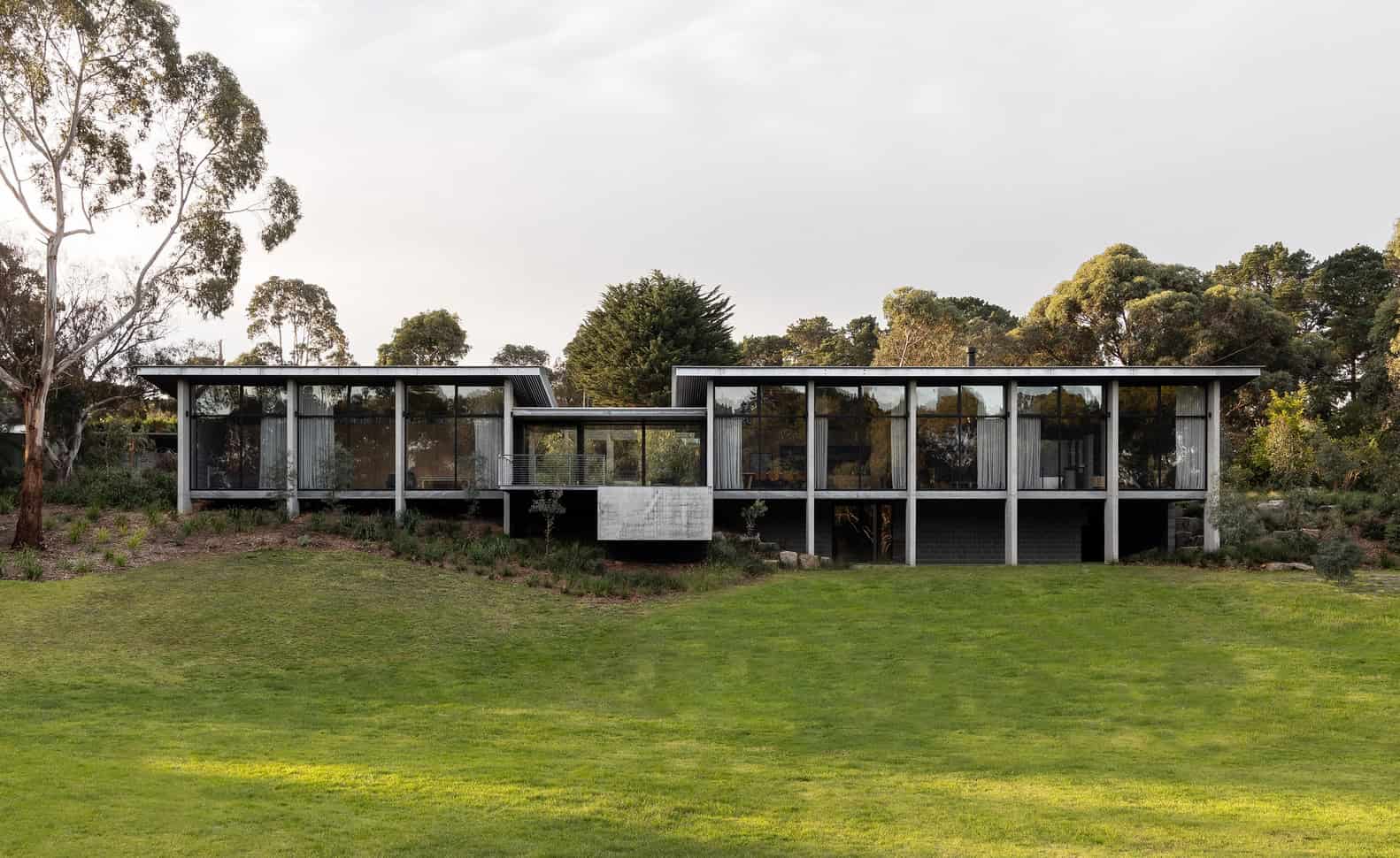Project: Merricks House
Architects: Aktis Architects
Location: Melbourne, Australia
Area: 5,005 sf
Year: 2023
Photographs by: Timothy Kaye
Merricks House, designed by Aktis Architects in Melbourne, Australia, offers a compelling exploration of form and materiality. Originally conceived as a half-submerged structure, the design evolved to become a monumental presence in its rural landscape. Situated above the flood plain, the building takes advantage of the site’s flat terrain with a three-meter elevation change on the northern side.


The design of this project was a journey of discovery. The original concept was half submerged in the rise of the landscape. As the concept navigated all the challenging conditions of the site/environment and budget, a contradictory strategy emerged. There seemed no reason to hide the building in the landscape. It was located in a rural setting, not in a natural forest. The building took on a monumental form of materiality and structure, anchored with unapologetic strength of presence into its landscape.
The site was predominantly flat with a height level change of approximately three meters along its northern side. This is where the building was set. Apart from the need to locate the building above the flood plain, the orientation of the site presented a design challenge. With expansive views across native vegetation to the south, the architectural response was to open the house to these views and simultaneously create the opportunity of introducing skylights and courtyards to wash the interior with northern sunlight.
The building is composed of two interconnected raking roofs, each sitting above a masonry box. The spatial planning and a concrete and steel structure and framing system, give the building its visual strength and define the architectural language. The raw materiality of the structure continues in the treatment of both interior and exterior finishes which reflect the client’s desire for raw and natural materials (timber, stone, concrete, and steel) in lieu of plasterboard or painted surfaces. Masonry elements define the form of the building while timber is used extensively to inject richness and warmth into the interior spaces. Skylights and courtyards bring northern light into the building.
The plan provides for a linear configuration of spaces that eliminates circulation areas and corridors. The structural grid system creates a sense of order whereby the building sits in contrast to the landscape. The colonnade of columns, which runs along the long face of the building, is separated by expansive windows which contrast to the strong masonry forms elsewhere.
This website uses cookies.